Interested in the early history of cinema? Curious about what daily life was like over 100 years ago? Would you like see the moon playing a banjo?
State Library Victoria members can access hundreds of databases from home (if your home is in Victoria). That’s millions of articles, magazines, archives, ebooks, videos, songs, audiobooks and more, available through the catalogue anytime. We’re taking a closer look at new and/or interesting databases as well as hidden gems from our collections. Read on for top picks and tips from Librarians.
Not a member yet? Sign up online first and reward your curiosity.
Today we’re looking at the Victorians on Film database by Adam Matthew.

What makes this database so great?
The Victorians on Film database offers a fantastic window on history, consisting of almost 1000 films from the late Victorian and early Edwardian era (1895 – 1913). It brings together three collections sourced from the British Film Institute (BFI):
The Victorian Film Collection
The largest collection in the database features works of British film pioneers. It showcases some early short form attempts at narrative works, from comedy and drama to fantastical trick films. You can also see ‘slice of life’ films and travelogues from around the world, all giving insight into Victorian era lives and attitudes.
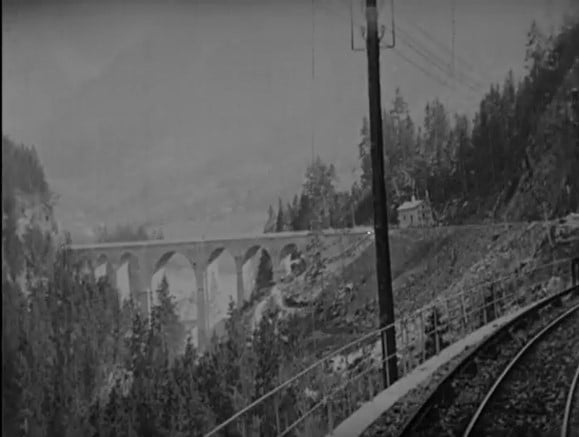
The Mitchell and Kenyon Collection
This collection features films produced by Sagar Mitchell and James Kenyon for their film company. Known as ‘actuality films’ these films document real life events. You can see turn of the century sporting events, parades and a good number of ‘factory gate films’ (these capture people leaving their place of work at the end of the day).

Early Large Format Films Collection
This selection broadens the scope of the database, providing examples of films from around the world produced by international companies. The larger film format (while fragile and short-lived) also provides a level of detail and clarity that really brings the era to life. (This collection even includes footage of the Australian cricket team in England in 1899).
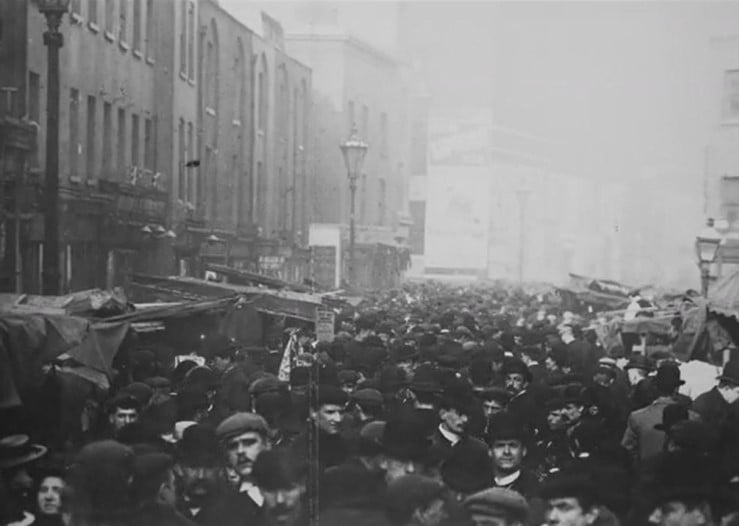
Many of these films act as unique primary sources for pivotal historic moments from the late Victorian and early Edwardian eras. Soldiers on parade, actual footage from the battlefield of the Boer War, footage of Queen Victoria (and later on, her funeral) and the Coronation of King Edward VII are but a few of the moments captured on film.
The collection of archival material is supplemented by expert analysis across a number of essays and videos. This provides context to the films and the early history of moving pictures. Subject headings and bibliographic detail are provided for each film, as well as content warnings when the material includes representations and behaviour that may be offensive. Some of the essays include analysis on voices and perspectives missing from these films, such as the depiction of women and the underrepresentation of racially diverse voices.
Some highlights
The ‘factory gate’ films provide a fascinating insight into the era. Seeing people looking at, and playing up to, the camera feels modern and alive in a way that the stillness of Victorian era photography just can’t capture. For those with relatives from the United Kingdom these films afford the unique opportunity to potentially witness a distant relative in motion. Watching one of these films on repeat reveals little stories amongst the sea of faces. The film, The ‘Hands’ Leaving Work at North-Street Mills, Chorley shows textile workers from the Lancashire town streaming from the factory gates. You can see a variety of working outfits and a surprisingly wide variety of ages, from young children to older men and women. Some ignore or do not notice the camera, while others stop and stare.
Children seem most interested in the camera:
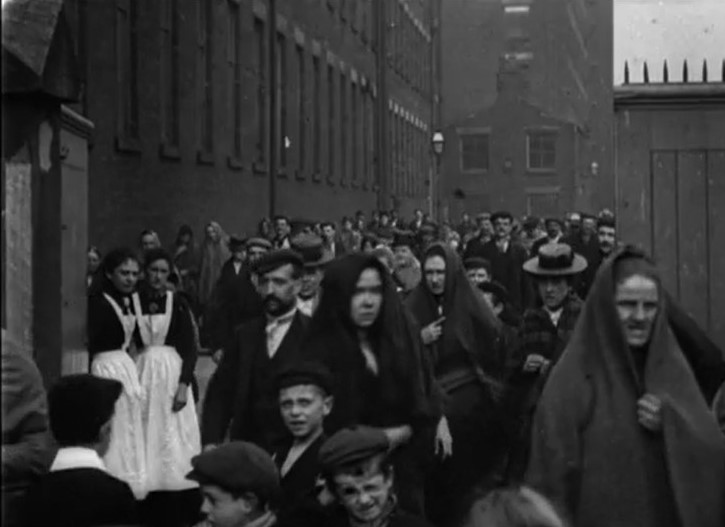
Some people smile at the camera:
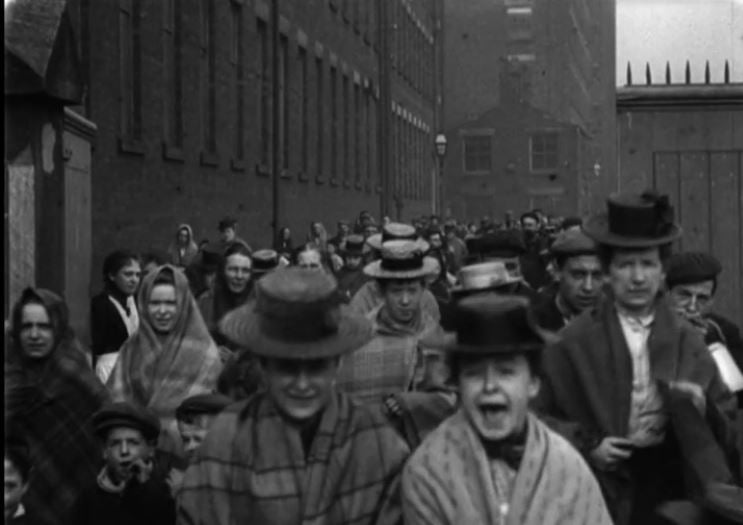
While others stop in their tracks, frozen like a photograph as people stream past:
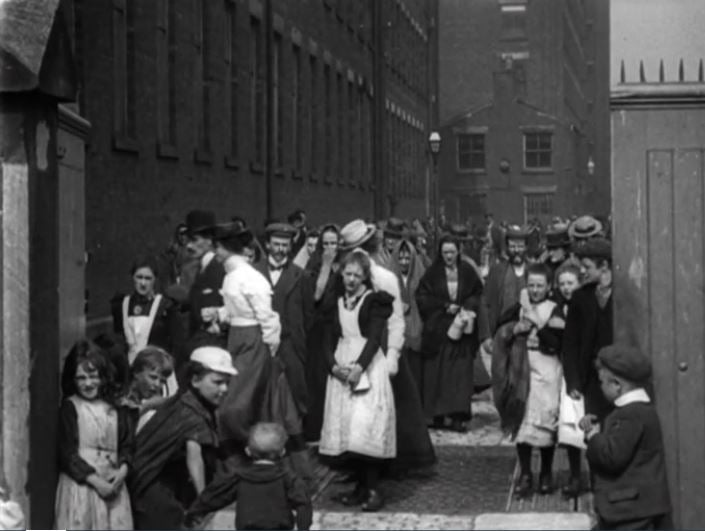
These early films are also a good opportunity to see acts in motion that otherwise could only have been seen in person. The complicated nature of the Agoust family dinner party juggling routine suggests they had performed it many times. No plates, chairs or umbrellas are safe from being gracefully tossed around.
In another of our subscription databases, British Library Newspapers (1732–1950), you can find mentions of some of this family’s other routines. The Era newspaper describes an earlier routine performed at the Crystal Palace:
Two variety shows were given in which there appeared… the Agoust family, who performed some wonderful juggling feats on revolving globes.
The Era, 11 June 1892, p 15
Here they are getting the chairs in order…
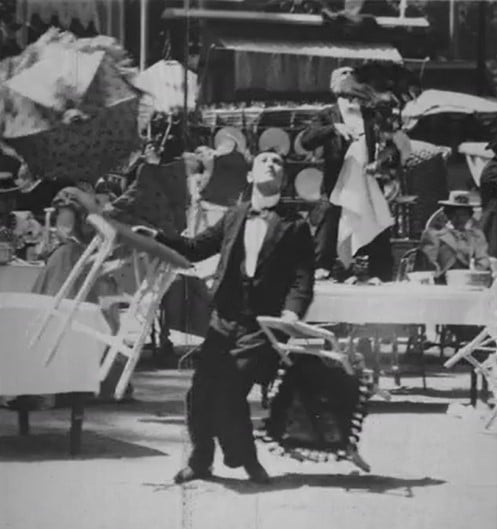
and putting away the plates:
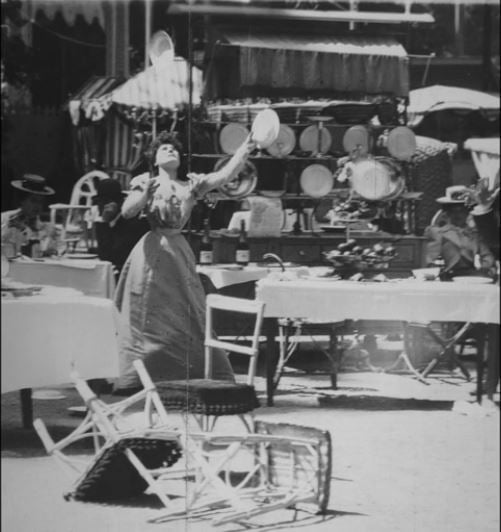
Equally, the Deonzo Brothers look to have honed their acrobatic barrel routine across many performances. Clearly a second take wasn’t afforded them as one barrel doesn’t quite stay in its place.
We do not get to witness the full performance, but they were popular enough to get a write up in the Adelaide Express and Telegraph, who transcribed a review of one of their performances by the Daily Express in 1901, the same year the film was shot. As described in the contextual note in the database, due to the fragile nature of the film, the start and end were often missing, so we don’t get to witness the big finale, or the spectacular feat described in the review:
One of the most sensational of their feats is that in which one of the Deonzo brothers, blindfolded and with his feet tied jumps from the floor into a tub, thence into another on the top of a couple of tables placed one on the other, out of it into a tub which stands on a chair, from which he turns a somersault into a tub on the stage, bringing the queer race to an end by bouncing out of this into yet another barrel some feet away.
The Express and Telegraph, 6 April 1901, p 5
One barrel does not do what it’s told:
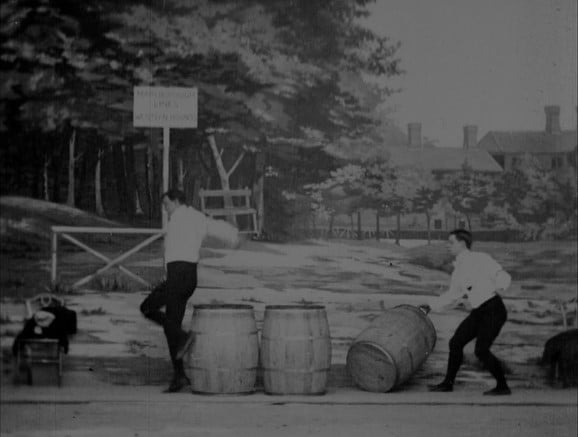
A leap that would still impress today:
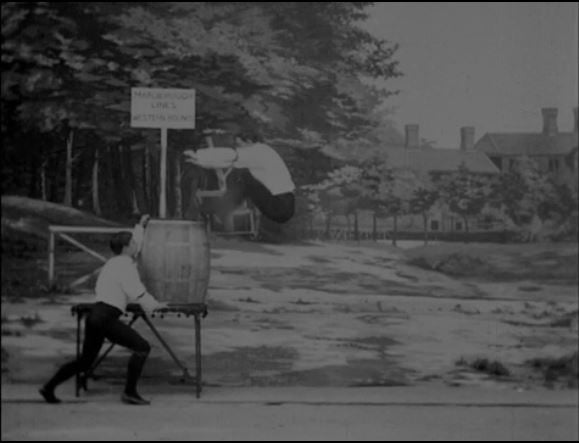
The ‘grand finale’:
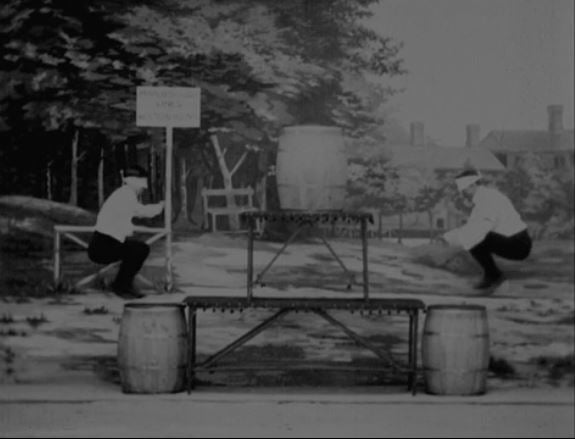
Trick films were popular in the early days of film, showcasing cutting edge special effects. Mr Moon is an interesting example because you can watch the initial test footage (of music hall comedian Percy Honri as ‘the moon’) and the finished film. The ‘seams’ are no longer visible in the later film, Mister Moon.
Test footage where an errant finger can be seen poking from behind the cloth:

Image from the finished film where the moon floats in pitch black darkness:
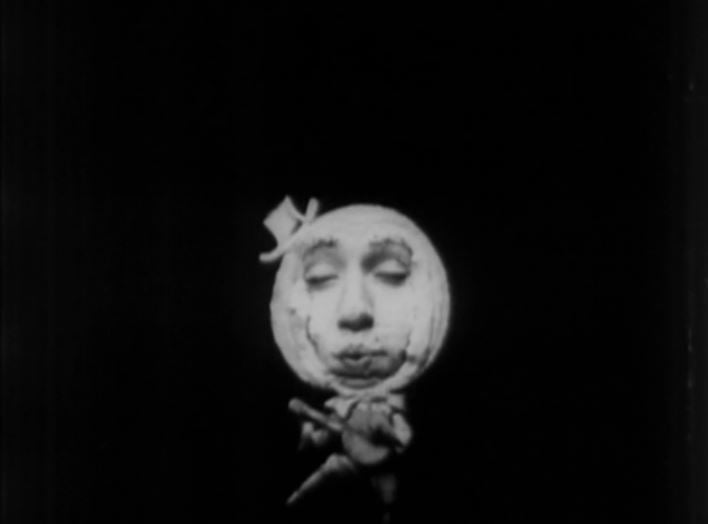
There are many stories to discover and films to delve into in the database and the short length of the films make it very easy to get lost down a rabbit hole of ‘I’ll just look at one more’…
You can find an example of a hand-colour tinted film with Ballet Du Chatelet:

An early George Méliès film, La Lune A Un Metre, featuring a moon even more frightening than the one in his later film, A Trip to the Moon:
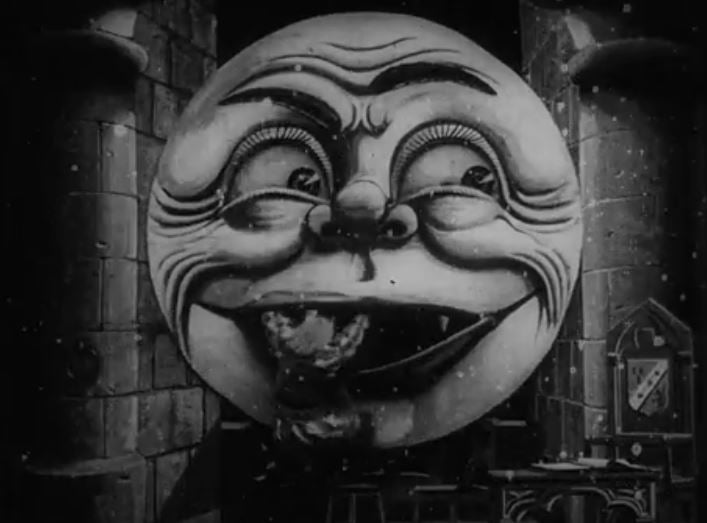
Early comic shorts such as the exaggerated boxing match in Has He Hit Me?:

and many more…
We hope you enjoy exploring Victorians on Film.
We always welcome your recommendations for database trials – let us know what you’d like to see. Have a research query or questions on how to use our online collections? Ask a librarian.
More to explore
Check out our latest databases on trial, and see a full list of all new and trial databases, by visiting our A-Z Databases page.
Or, check out some more great stories from our blog:

